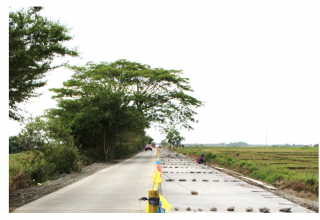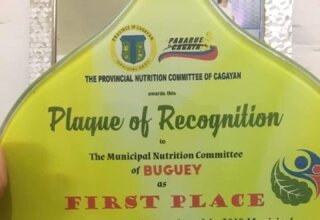
Pancit was introduced to us by Chinese traders long ago even before Spaniards occupied our land. Yet, over the years, it was perhaps because of our creativity and our ability to adopt quickly that made pancit definitely Filipino and a part of our identity. With that, the Ibanag too has added a unique taste and turned this once foreign dish into a local favorite: the Pancit Batil Patung!
Tuguegarao City and its neighboring towns in Cagayan have seemingly become as synonymous with batil patung as it is with the warm weather. Its hot serving and mouthwatering presentation makes it perfect for the usual weather. It’s a must eat for all visitors and an all-time favorite for the locals no matter how many times they’ve eaten it. If you’ve been away even for a while, you’ll definitely look for and crave batil patung.
The pancit predecessors
We all know how a typical batil patung is served. Usually, it’s loaded with karne ng nuwang (carabao’s beef), sprouted monggo, shredded chicharon (or sometimes chopped lechon carajay), and sliced green onions. Of course, who could forget the egg that tops it all? Not to mention the accompanying onion-soy sauce-chili vinegar combo for a better treat. But, did you know that this was not how it used to be back in the day?
Vicente Singayan, Jr., Tuguegarao City Information Officer, tried to recall the predecessors of the now popular pancit batil patung. You probably know him better through the name “Jun Brown” – yes, the man with the fascinatingly deep yet alluring voice on the local FM radio. As a pure native of the city back when it was still a humble town in Cagayan, he grew up witnessing and, fortunately, tasting the best food the town had to offer, including its pancit delicacies.
Before the 1950s, there was a popular pancit called “seco” or “seko”, he said. This, he described, was not much oily and watery. “Awan tu zigu na,” [there was no soup], he recalled. However, it was loaded with a lot of “karne na nuwang” or carabao’s beef which quickly made all patrons full.
In those days, as soon as they enter the “panciteria” (pancit restaurant), customers were greeted and asked for orders by the panciteria attendants or crew. They would ask, “piga seco? [How many seco]?” to which the customers immediately respond how many they would order.
The seco was also best eaten with hot pandesal, Singayan said. As he shared this to us, Singayan seemingly felt his long lost crave for his childhood specialty, imagining as if he could again taste the once beloved seco.
After the 1950s, another pancit variant became a hit among the locals. Singayan recalled this as “Pancit Luglug”. This was apparently different from the pancit luglog from Pampanga. Singayan claimed that the distinct characteristic of this pancit was that it was more watery or had lots of “zigu [soup]” compared to the earlier seco.
The emergence of the batil
It was not until the 1980s when pancit batil patung started to be famous among patrons in the town. The highlight is, of course, the egg on top. The egg may also be mixed, beaten, and cooked with the accompanying “sabaw” or soup. The “karne ng nuwang” or (cara beef) was certainly included in the recipe.
If you think the noodles or “miki” today is thick, think again. The miki used before was thicker than the ones prepared and cooked in today’s recipe; and that flour was cheaper then. This type of miki was called the “classic.” He also claimed that the miki before was less yellow and instead was whiter, more like “anemic,” he described. The noodles can be compared to the flat ones used in some panciteria today; in contrast with the circle and thin noodles. He further claimed that, because of this, the earlier pancit batil patung was more delicious than today.
Not long after, other native toppings were introduced such as balut, chicharon, “agal” or liver, chorizo, and sprouted monggo to name a few. As the specialty became even more famous and loved by the people, more were added and introduced over the years. In Solana, Cagayan, there is said to be a panciteria that serves dinuguan and igado as their toppings.
Over the years, more panciterias have evidently opened in Tuguegarao to the extent that every barangay in the city may, on average, have more than five panciterias serving pancit batil patung. You have lots of options to choose from! However, there are also some that have closed. There is an uncertainty over who came first and is still operating until today. Some say it’s Triangle’s Panciteria while others claim otherwise.
That is why Jun Brown, Singayan, believes that it all goes down to which one has the most diverse, delicious, and loaded toppings to offer. Recently, you could even make a request to the cook and have “more toppings, less miki.” Just don’t order more toppings, no miki.
Yet, regardless of the serving size, various cooking styles, and what lies on top, everyone would agree: nothing beats the distinct and irreplaceable taste of our own Pancit Batil Patung! Northernforum.net
















